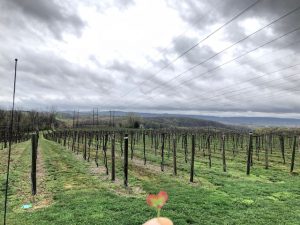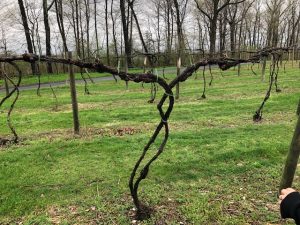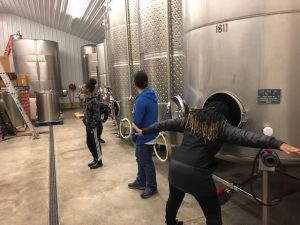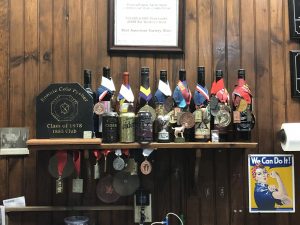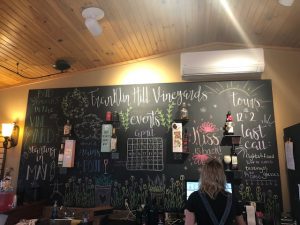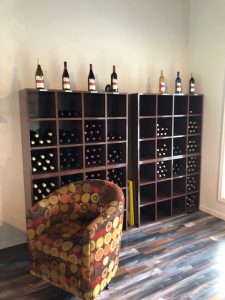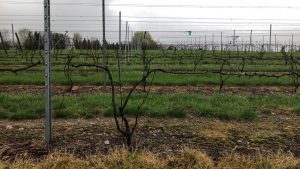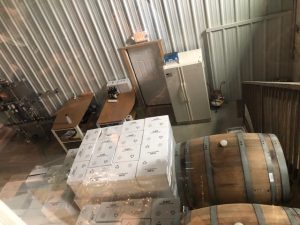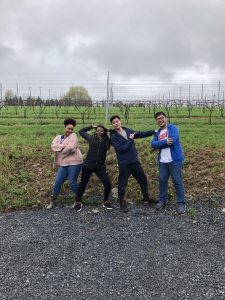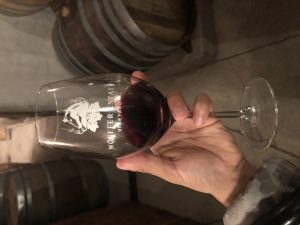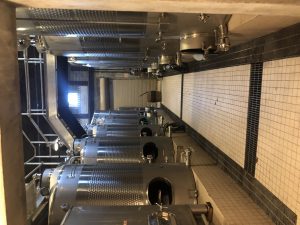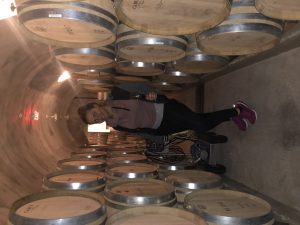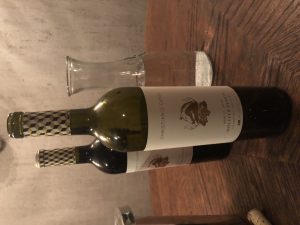Over the break, I visited Bangor, Pennsylvania to visit Franklin Hill Vineyards and M&M Vineyards. The vineyards differentiated in viticulture, vinification, and distribution of their wines (2018). The first stop on my road trip was Franklin Hill Vineyards, where the estate featured French American vines, a tasting room, and a vinification cellar. Throughout the tour, I learned that they harvest from their oldest vines which are 42 years old.
They have newly planted vines that are seven years old. The new vines have a trickle irrigation system due to lack of rain. The old vines never needed this system. The used soil is sleight which helps keep an even flow of water to vines. Their main grape varieties are Vidal, Catawba, and Chambourcin. They do a lot of blends. For harvesting it takes about seven weeks, starting in September. They produced 3000 gallons of wine their first year. For fermenting must, they use Dominos Sugar or fructose to sweeten all wines, which is chaptalization. Fermentation happens in steel tanks. To incorporate oak flavors they use wood chips. They use jams to add different flavors into the wine.
This vineyard and winery have a 95% women staff, which I love because the start of the company came together by a group of women in Pennsylvania who knew nothing about wines, let alone how to grow grapes (2019). To hear of their journey and the success they’ve achieved is heartwarming and amazing. Within their vinification cellar, they had a small lab area in the corner where Bonnie, one of the first women, would blend wines in search of their new specialty wines. Along the wall were medals and awards for their past and current wines.
As we completed the tour we stopped in their tasting room, which resembles a cabin with a patio outside. Inside is colorful but dark lighting with a center bar.
Behind the bar is a fridge with available wines to taste and a large chalkboard with all sorts of writing pertaining to the wines of the season and different varieties. The tasting was five dollars per person with five wines each. Their options consist of reds, whites, rosé, hard ciders, and specialties. Giving us a total of twenty-three wines to explore. I chose two red, two whites, and a specialty. Overall their wines were very sweet, not many tannins, but very fruity. I do feel that their wines weren’t balanced. After my third tasting, I was overwhelmed by the sweetness and wasn’t sure if I could continue.
Next stop on my road trip was M&M Vineyards.
This vineyard is fifteen minutes from Franklin Hills and had a completely different atmosphere and wine production. Riding up to M&M it’s very spacious and the vineyard is smaller than Franklin’s. Walking into their only building, the tasting room, awaiting is one of the owners Mrs. Sidhu. I introduced myself as a student and automatically she goes into teacher mode. Mr. and Mrs. Sidhu are both retired professor in science. They started to the vineyard to experimenting with vines and it’s something they studied for years and enjoy. It took two years of research to find this specific area to be a cornfield.
When starting out three years ago they ran into issues with their soil. They had issues of milestones that were left from corn crops (2016). To fix this they began to plant mustard plants and loam in between vines to promote growth and manage the soil. They made sure to plant vines on a slope for even sunlight. They practice making hybrids by taking strong roots and putting them onto weak ones.
The details and consideration they took into making this vineyard are amazing. You can taste the difference in their wines apart from Franklin Hill’s wines. M&M wines are only three-year vintage, using neutral oak casks. Including the use of oak chips to impart flavor. They only produce Cabernet Franc, Pinot Noir, Vidal, Chardonnay, Merlot, Riesling, and sauvignon blanc grapes. What I enjoyed about their tasting is the menu had notes descriptions of what to expect. Overall their wines were very oaky, with vanilla flavors, lots of tannins, kind of dirty in taste and long finishes.
References
D. (2016). Facts on Milestones. https://fernie.civicweb.net/document/79115
Certified specialist of wine: Study guide 2018. (2018). Washington, DC: Society of Wine Educators
The Morning Call. (2019, The Morning Call). Elaine Pivinski: Lehigh Valley helping winery, Social Still flourish

